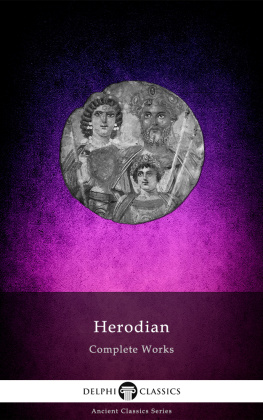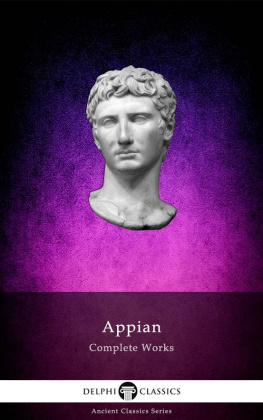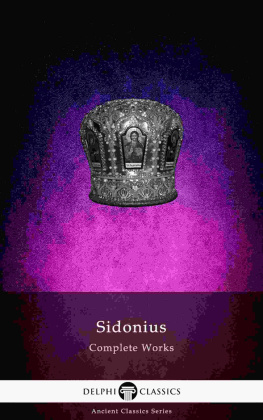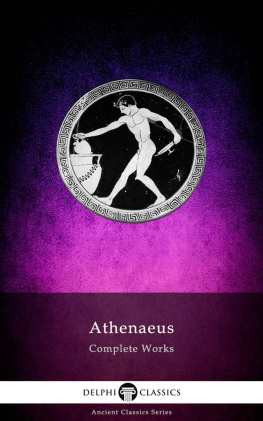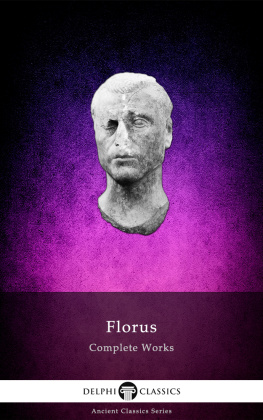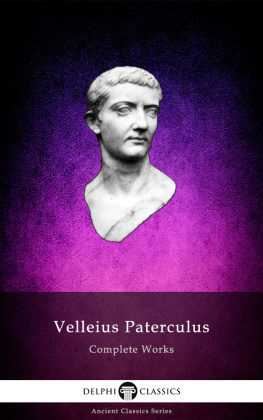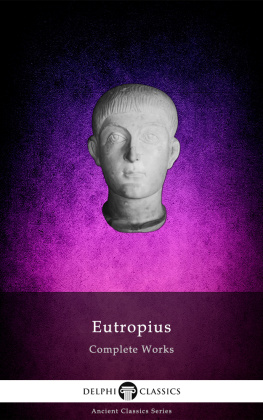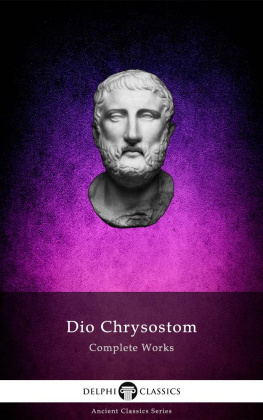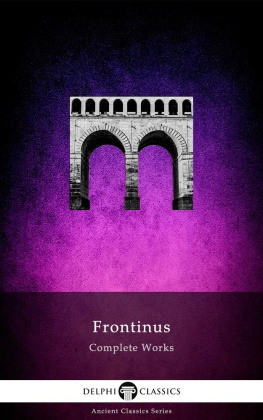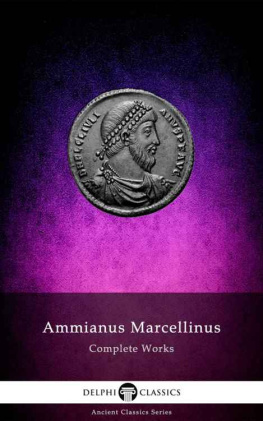
The Complete Works of
HERODIAN
(c. AD 170c. 240)

Contents

Delphi Classics 2020
Version 1

Browse Ancient Classics







The Complete Works of
HERODIAN OF ANTIOCH

By Delphi Classics, 2020
COPYRIGHT
Complete Works of Herodian
First published in the United Kingdom in 2020 by Delphi Classics.
Delphi Classics, 2020.
All rights reserved. No part of this publication may be reproduced, stored in a retrieval system, or transmitted, in any form or by any means, without the prior permission in writing of the publisher, nor be otherwise circulated in any form other than that in which it is published.
ISBN: 978 1 91348 715 7
Delphi Classics
is an imprint of
Delphi Publishing Ltd
Hastings, East Sussex
United Kingdom
Contact: sales@delphiclassics.com

www.delphiclassics.com
With special thanks to
Roger Pearse and the contributors to
http://www.tertullian.org/fathers/

The Translation

Ancient remains at Antioch, an ancient Greek city on the eastern side of the Orontes River, near the modern city of Antakya, Turkey Herodians assumed birthplace

Early nineteenth century depiction of Antioch
Roman History

Translated by Edward C. Echols, 1961
Transcribed by Roger Pearse, http://www.tertullian.org/fathers/
Very little is known about the third century historian Herodian of Syria, sometimes referred to as Herodian of Antioch (c. 170 c. 240). He was a minor Roman civil servant, who wrote a colourful history in Greek titled History of the Empire from the Death of Marcus ( ) in eight books, concerning events from AD 180 to 238. Herodian was a Greek that lived for a lengthy period of time in Rome, though possibly without holding any public office. From his extant work, it appears that he was still living at an advanced age during the reign of Gordianus III, who ascended the throne in 238. Beyond this, nothing is known of his life. The ninth-century patriarch of Constantinople, Photius (Codex 99) gives an outline of the contents of Herodians Roman History and passes a flattering encomium of his style, which he describes as clear, vigorous, agreeable and preserving a happy medium between an utter disregard of art and elegance and a profuse employment of the artifices and prettinesses that were known under the name of Atticism. Herodian appears to have used Thucydides as a model to some extent, both for style and for the general composition of his work, often introducing speeches wholly or at least in part imaginary.
His Roman History covers the period from the death of Marcus Aurelius in 180 to the beginning of Gordian IIIs reign in 238. It provides a first person account of one of the most politically diverse times of the Empire. The first book describes the reign of Commodus from 180 to 192, while the second book discusses the Year of the Five Emperors in 193. Book Three charts the reign of Septimius Severus from 193 to 211 and the fourth discusses the reign of Caracalla from 211 to 217. Book Five details the reign of Elagabalus from 218 through 222 and Book Six encompasses the reign of Severus Alexander from 222 to 235. Book Seven recounts the reign of Maximinus Thrax from 235 to 238 and the final book relates the Year of the Six Emperors in 238. It appears that Herodian principally wrote for an eastern audience, as he often explains different Roman customs and beliefs that would have seemed foreign to Easterners.

Bust of Commodus from the Palazzo Massimo alle Terme Commodus (161-192 AD) was Roman Emperor with his father Marcus Aurelius from 177 until his fathers death in 180, and solely until 192. His reign is commonly considered to mark the end of the golden period in the history of the Roman Empire known as the Pax Romana. The first book of Herodians Roman History concerns the reign of Commodus.
CONTENTS

Bust of Gordian III (225244 AD) was Roman Emperor from 238 AD to 244 AD. At the age of 13, he became the youngest sole legal Roman emperor throughout the existence of the united Roman Empire.
TO MY WIFE
MARY VIRGINIA HATHAWAY ECHOLS
ACKNOWLEDGMENTS
I AM grateful to Dr. Linton C. Stevens, Professor of Romance Languages in the University of Alabama, for helpful criticism in regard to style and clarity. I have also to thank Professor Mason Hammond of Harvard University for his encouragement. And I wish to express my appreciation to Miss Genevieve Rogers, of the University of California Press, who assisted greatly in bringing the work to its final form.
The successful completion of this work owes much to the generous and sustained support of the University Research Committee of the University of Alabama. Grants-in-aid enabled me to give full time to the work of translation during two summers, and, even more important, made it possible for me to have access to a library with facilities adequate for the specialized requirements of this project.
For the shortcomings of the work I assume full responsibility.
EDWARD C. ECHOLS
Next page
